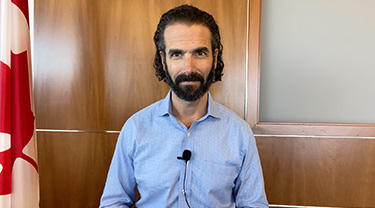To say that 2022 hasn’t played out quite the way most have expected would be an understatement. Inflation above 40-year highs across much of the industrialized world, war in Europe and tensions in the South China Sea have only compounded the lingering effects of a global pandemic. As the world economy struggles to move beyond the impacts of COVID-19, we continue to face challenges not seen in generations. How policy-makers and businesses navigate these challenges, and their level of success, will determine if the global economy falls into recession.
Central bankers in Canada, the United States, the euro area and elsewhere are almost singularly focused on fighting inflation through a series of steady and significant interest rate increases. With headline inflation rates of nearly 10%, driven by supply shortages resulting from the war in Ukraine and ongoing COVID-19-related supply chain disruptions, most of the world’s major central banks have swiftly reversed course on the accommodative policy approach that saw them through the pandemic.
While prices for key commodities have fallen back, on concerns around global growth, they remain elevated and subject to heightened levels of volatility. We don’t expect much relief on food prices over the next year or so, given damage to agricultural lands and the displacement of labour in both Russia and Ukraine, to say nothing of flooding and drought conditions in other parts of the world. On oil, we expect West Texas Intermediate (WTI) crude to average $98/barrel this year, before settling back to $84/barrel in 2023. This, together with interest rate increases, the moderating impact of year-over-year price comparisons and weakening consumer demand should help dampen core prices next year.
You should also check out
With growing risks, Canadian companies face new challenges. EDC’s Global Economic Outlook offers insights to help you make better business decisions.
In the United States, the Federal Reserve has used supersized increases to push interest rates from 0.25% at the beginning of the year to 2.5% by the start of the third-quarter. While this has slowed inflation, it hasn’t brought it down to its target. As a result, we expect the Central Bank to continue to increase rates aggressively, reaching around 4% in 2023 and holding steady through the rest of next year. The swift move in U.S. interest rates, combined with accelerated balance sheet reductions, will reverberate across the American economy and throughout the world.
While we expect the U.S. to avoid technical recession, thanks to still-high pandemic-era consumer savings and an historically tight job market, we’re calling for uninspired, below-trend growth of 1.4% in 2022 and just 0.6% in 2023. This doesn’t leave much room for error, in light of prevailing market volatility, and so risks remain high.
The Bank of Canada will tread a similar path to that of the U.S. Federal Reserve, with interest rates peaking above neutral levels in 2023, before pulling back the following year. The Canadian economy is projected to grow by 3.2% in 2022 and 1.3% in 2023.
While the European Central Bank is also hiking interest rates, the first time in more than a decade, it faces a more challenging environment, and will only reach a high of 2.25% in 2023. On the frontlines of the Russia-Ukraine conflict and faced with Russia’s determination to squeeze energy supplies as a political pressure tactic, Europe faces a difficult winter. Natural gas price futures have more than tripled in many countries from pre-war levels, forcing governments to develop plans for energy rationing. Uncertainty over supplies and surging prices will tear across economies and the continent, dragging the euro area into recession this year and early next year, before posting essentially no growth in 2023.
One of the few countries where monetary policy is likely to be eased rather than tightened will be in China. The economic impacts of the country’s zero-COVID-19 policies aren’t forecast to improve in 2023, and the threat of lockdowns will keep consumers and business confidence on edge. At the same time, ongoing debt accumulation and overcapacity in the property sector will require policy support to stem wider economic impacts. Our outlook for China’s economy calls for historically weak growth of 3.0% in 2022 and 4.9% in 2023.
The bottom line?
The economic outlook for the world has weakened since the first half of the year, due to headwinds from a rare convergence of challenges. Going forward, there are many interdependent risks with global implications.
Our autumn release of the Export Development Canada Global Economic Outlook sees global growth falling to 2.2% this year, and 2.6% in 2023. While we aren’t forecasting a global recession, a fragile global economy leaves little room for error.
This week, a special thanks to Ross Prusakowski, director of our Economic and Political Intelligence Centre.
As always, at EDC Economics, we value your feedback. If you have ideas for topics that you would like us to explore, please email us at economics@edc.ca and we’ll do our best to cover them.
This commentary is presented for informational purposes only. It’s not intended to be a comprehensive or detailed statement on any subject and no representations or warranties, express or implied, are made as to its accuracy, timeliness or completeness. Nothing in this commentary is intended to provide financial, legal, accounting or tax advice nor should it be relied upon. EDC nor the author is liable whatsoever for any loss or damage caused by, or resulting from, any use of or any inaccuracies, errors or omissions in the information provided.





